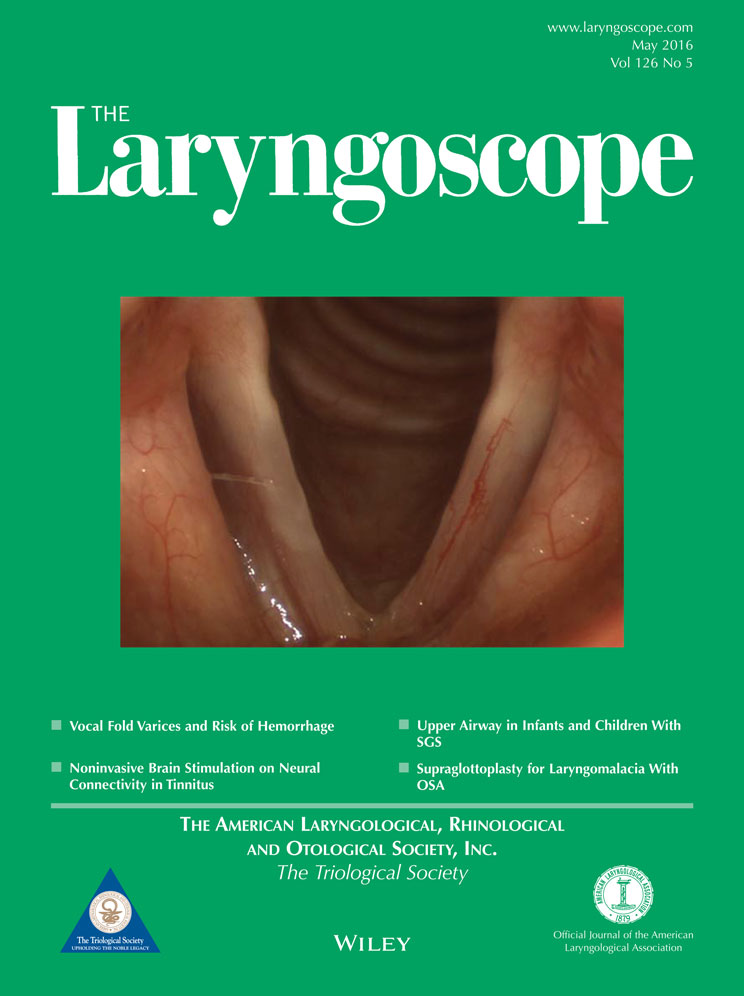Reduced serum levels of syndecan-1 in patients with tongue squamous cell carcinoma
This work was performed as part of Mohammad S. Shegefti's dissertation as a requirement for graduation as a General Practitioner from Shiraz School of Medicine, Shiraz, Iran.
This work was financially supported by a grant (90-01-01-2815) from Shiraz University of Medical Sciences and from the Shiraz Institute for Cancer Research (ICR-100-502), Shiraz, Iran.
The authors have no funding, financial relationships, or conflicts of interest to disclose.
Abstract
Objectives/Hypothesis
To investigate soluble syndecan-1 (Sdc-1) in the sera of patients with tongue squamous cell carcinoma (SCC) and its correlation with the histopathological criteria of tumors.
Study Design
In a case-control study using a convenient method of sampling, 18 female and 25 male patients with confirmed diagnosis of tongue SCC, and 19 healthy females and 27 males were studied.
Methods
Soluble Sdc-1 was measured in the sera of 43 patients with tongue SCC and was compared with that of healthy age-/sex-matched controls using a commercial enzyme-linked immunosorbent assay. Clinical and pathological data, along with the demographic characteristics of the patients, were recorded at the time of sampling.
Results
The levels of soluble Sdc-1 were decreased in the sera of patients compared to controls (91.17 ± 88.60 vs. 158.17 ± 103.47 ng/mL, P = .002). Although patients who smoke tended to have higher grades (P = .043), there was no significant difference in the level of syndecan-1 between smokers and non-smokers. A significant difference between syndecan-1 in the sera of patients with tumors of different stages was observed (Kruskal-Wallis test P=0.039); however, scarcity of patients in stages I and III decreased the power of the comparison.
Conclusions
Sdc-1 levels in the sera of patients do not correlate with the tumor progression in the tongue SCC. This is in contrast with the reported inverse correlation between the expression level of membranous Sdc-1 and the histological grade and size of head and neck tumors. Therefore, Sdc-1 shedding may not be a major mechanism in the progressive loss of its expression regarding tongue tumor.
Level of Evidence
NA Laryngoscope, 126:E191–E195, 2016




